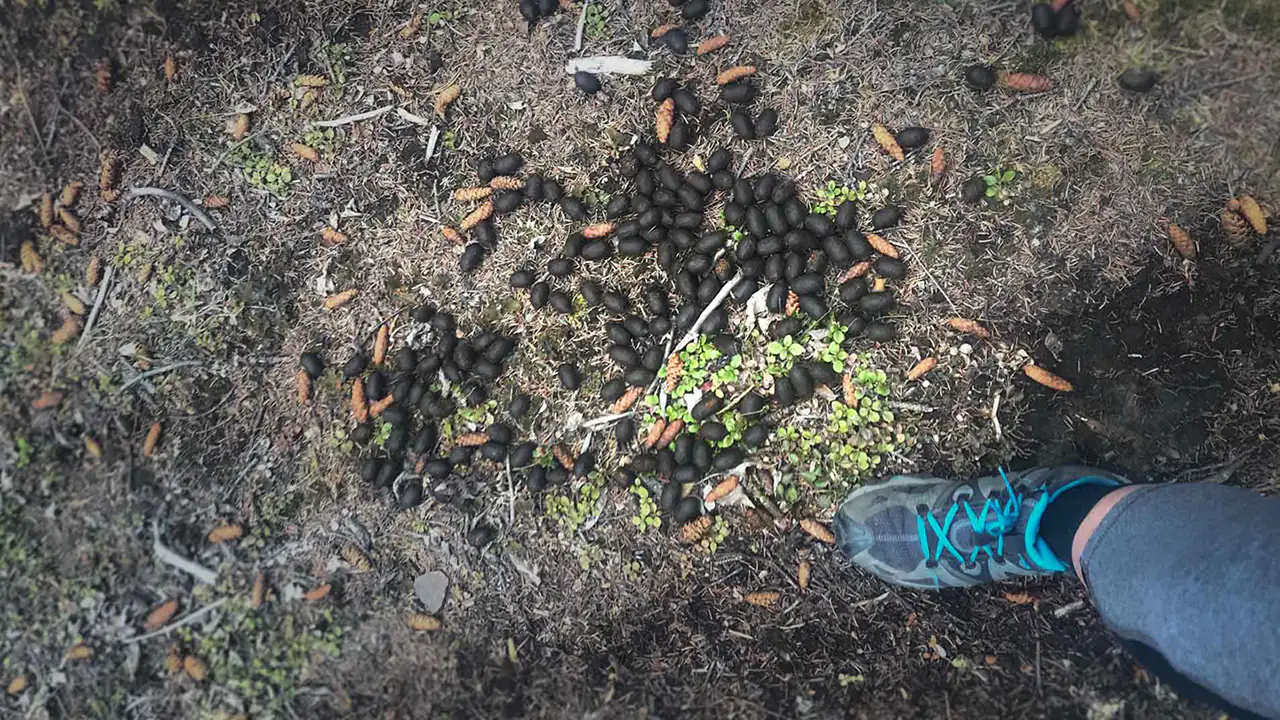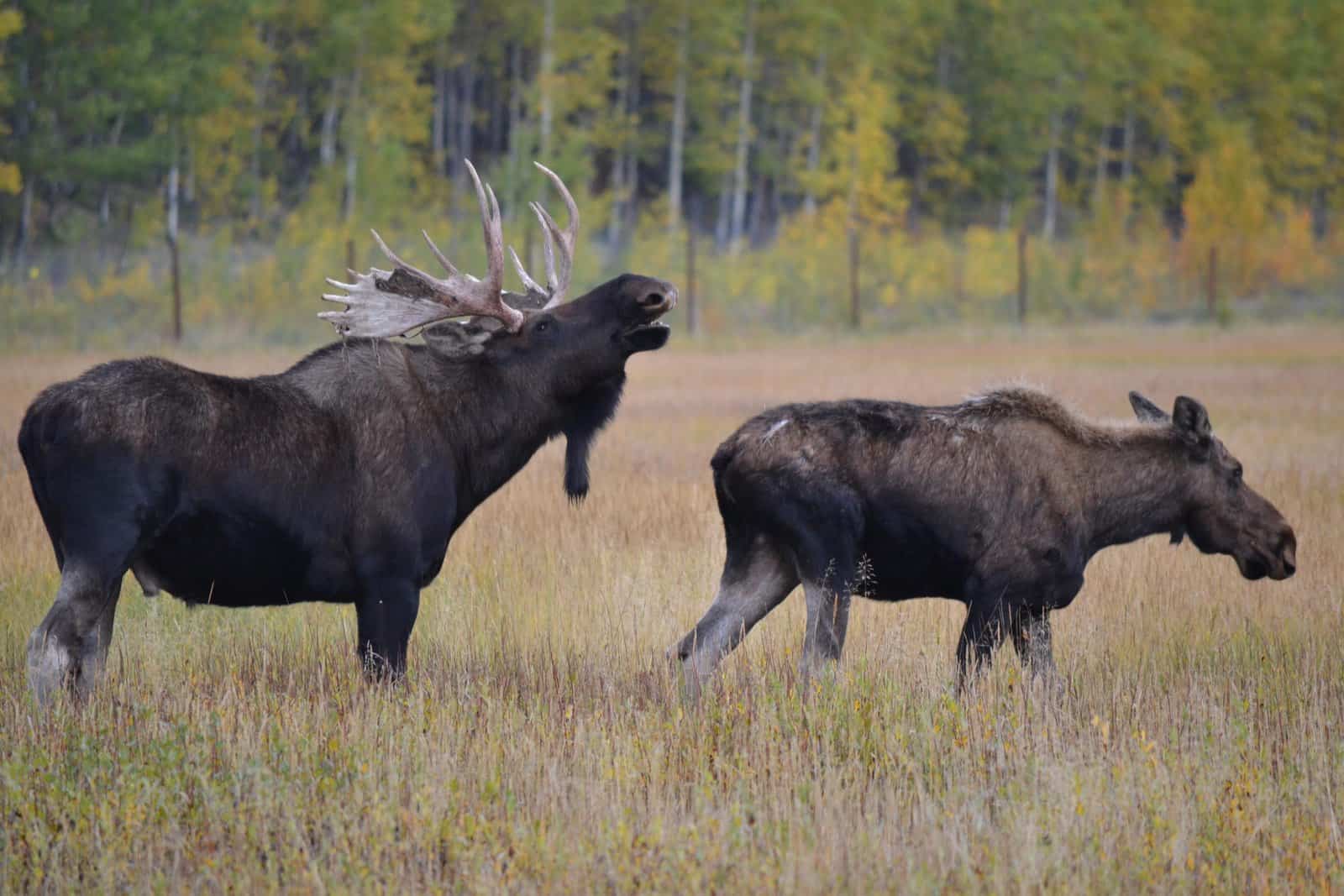Moose scat is generally larger and more pellet-like, while elk scat is smaller, more cylindrical, and segmented. Identifying between the two can help determine the presence of these animals in an area.
When exploring the wilderness, being able to distinguish between moose scat and elk scat can provide valuable insights into the local wildlife population. Moose scat is often found in piles, with pellets that are larger in size compared to the smaller, cylindrical pellets of elk scat.
Understanding these differences can enhance your wildlife tracking skills and help you appreciate the diversity of animals in their natural habitats. By recognizing the subtle variations in scat characteristics, outdoor enthusiasts can gain a deeper understanding of the ecosystems they are exploring.
Introducing Moose And Elk
When exploring the majestic wildlife of North America, it’s essential to understand the distinct characteristics of Moose and Elk. Let’s delve into their differences by investigating the telltale signs found in their scat.
An Overview Of Moose
Moose, the largest species in the deer family, inhabit dense forests and marshy areas throughout North America. Recognizable by their imposing size and antlers, moose are primarily herbivores and play a vital role in their ecosystems.
An Overview Of Elk
Elk, also known as wapiti, are magnificent creatures that roam across various habitats, from mountainous regions to grasslands. With their distinctive bugling calls and impressive antlers, elk are a symbol of wild beauty in the wilderness.

Credit: www.amazon.com
Understanding Scat
What Is Scat?
Scat is the fecal droppings of animals like moose and elk.
The Importance Of Scat
Scat provides valuable insights into the diet and health of animals.
It also plays a crucial role in marking territories.
Differentiating Moose Scat And Elk Scat
When exploring the fauna-rich woods and trails, it’s not uncommon to come across animal scat. Among the different types of scat, distinguishing between moose and elk scat can be a challenge for those unfamiliar with the nuances of each animal’s droppings. Let’s delve into the physical characteristics, composition, and contents of moose scat and elk scat to help you identify and differentiate the two with ease.
Physical Characteristics
The physical characteristics of moose scat and elk scat are crucial in distinguishing one from the other. Moose scat is typically larger and chunkier compared to elk scat, often reaching a length of three to five inches. In contrast, elk scat is generally smaller and rounder, with a length not exceeding two inches. Additionally, moose scat tends to maintain its tubular shape, while elk scat may appear more spherical.
Composition And Contents
Examining the composition and contents of moose and elk scat can provide further insight into differentiating between the two. Moose scat is primarily composed of woody material, as well as herbaceous plants and leaves. It may also contain twigs and bark due to the moose’s foraging habits. On the other hand, elk scat is often more consolidated and may contain a higher percentage of grasses and forbs. These differences in composition can be a valuable indicator when attempting to discern between moose and elk scat.

Credit: yukonwildlife.ca
Ecological Impact
The ecological impact of Moose Scat and Elk Scat is significant, as they play a crucial role in the ecosystem and interact with other wildlife in various ways. Understanding their ecological impact is essential for understanding the delicate balance of nature.
Role In Ecosystem
Moose and Elk scat are more than just waste; they play a critical role in the ecosystem. When it comes to the role of moose scat, it serves as a valuable source of nutrients and organic matter for the surrounding vegetation. The scat acts as a fertilizer, aiding in the growth of plants and enhancing the overall productivity of the ecosystem. It also helps in the cycling of essential nutrients, which are essential for the healthy functioning of the ecosystem.
Similarly, elk scat serves a similar purpose by enriching the soil with organic matter. The decomposition of elk scat contributes to the nutrient cycles, helping to sustain the diverse range of plant life in the ecosystem.
Interaction With Other Wildlife
Moose scat and elk scat serve as crucial indicators for the presence of these large herbivores, which can significantly impact the behavior and distribution of other wildlife species. Various small organisms like insects and microorganisms feed on the scat as a source of food and shelter.
Moreover, scavengers such as carrion birds, beetles, and even smaller mammals are attracted to moose and elk scat. They feed on the scat and help in breaking it down further, aiding in the decomposition process and nutrient recycling.
Addittionally, the scent of moose and elk scat can also act as a territorial marker. Male moose and elk often defecate in specific areas known as “latrines” to communicate their presence to other individuals. This marking behavior impacts the behavior of other wildlife by influencing their movement and resource partitioning within the ecosystem.
Human Perspectives
When it comes to the scat left behind by moose and elk, human observers and outdoor enthusiasts find themselves in a unique position to observe and identify these droppings. Understanding the differences between moose scat and elk scat can provide valuable insights into the habits and movements of these majestic animals. Let’s explore the key points of observation and identification, as well as the cultural significance of these scat types.
Observation And Identification
Observing and identifying moose scat and elk scat can be an interesting task for nature enthusiasts. To distinguish between the two, one must pay attention to certain characteristics:
- Size: Moose scat tends to be larger in size compared to elk scat.
- Shape: Moose droppings are often more rounded and cylindrical, while elk scat can appear more like oval-shaped pellets.
- Texture: Moose scat is usually composed of large plant fibers, while elk scat contains smaller, compacted fibers.
- Color: The color of moose scat can vary depending on their diet, ranging from brown to dark black. In contrast, elk scat tends to be lighter in color, often resembling dark brown or green pellets.
By carefully observing these characteristics, amateur naturalists can gain valuable insights into the presence and behavior of both moose and elk in their natural habitat.
Cultural Significance
Scat may be seen as a rather unappealing topic to some, but it holds cultural significance for many indigenous communities and outdoor enthusiasts. In various cultures, scat has been used as an essential resource:
| Community | Use of Scat |
|---|---|
| Ancient Tribes | Used moose and elk scat for traditional medicinal purposes, as they believed the droppings had healing properties. |
| Survivalists | Identifying and tracking scat is an important skill for survivalists, providing information on the presence of these large animals in the vicinity. |
| Ecologists | Studying and analyzing scat helps ecologists better understand the diet, health, and overall well-being of moose and elk populations. |
Recognizing the cultural significance of these animal droppings highlights the connection between humans and wildlife, showcasing the importance of coexistence and understanding within the natural world.

Credit: www.amazon.com
Frequently Asked Questions On Moose Scat Vs Elk Scat
What Is The Difference Between Moose Scat And Elk Scat?
Moose scat and elk scat differ in size and shape. Moose scat is larger and has a cylindrical shape, while elk scat is smaller and more oval-shaped. Additionally, moose scat tends to have a wetter consistency, while elk scat is drier.
These differences can help identify which animal left the droppings.
How Can You Identify Moose Scat In The Wilderness?
Moose scat can be identified by its large size and cylindrical shape. It is typically dark brown or black in color and may have a slightly twisted appearance. When fresh, moose scat may appear shiny due to its high moisture content.
Keep an eye out for these characteristics when exploring the wilderness.
Is Elk Scat The Same As Deer Scat?
No, elk scat is distinct from deer scat. While both animals belong to the same family, the droppings they produce have significant differences. Elk scat is generally larger and more oval-shaped than deer scat. Elk scat also tends to have a drier consistency compared to the wetter consistency of deer scat.
Can You Determine An Animal’s Diet From Its Scat?
Yes, it is possible to identify an animal’s diet by examining its scat. By analyzing the contents of the feces, such as plant material or bone fragments, experts can determine what the animal has been eating. This information is valuable for understanding an animal’s habitat, feeding preferences, and overall ecosystem health.
Conclusion
Distinguishing moose scat from elk scat is crucial for wildlife tracking and conservation efforts. Understanding the differences in size, shape, and contents of their droppings can provide valuable insights into their diets and habitats. By learning to identify moose and elk scat, outdoor enthusiasts and conservationists can contribute to the protection of these majestic creatures and their ecosystems.



